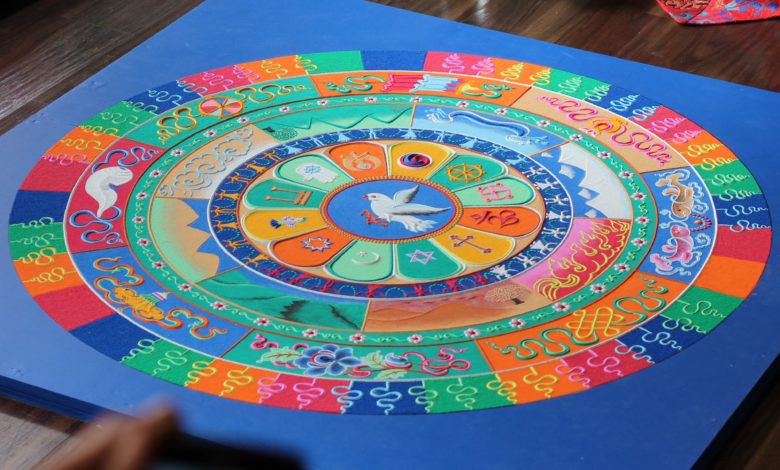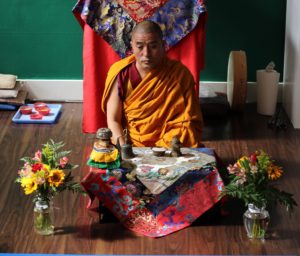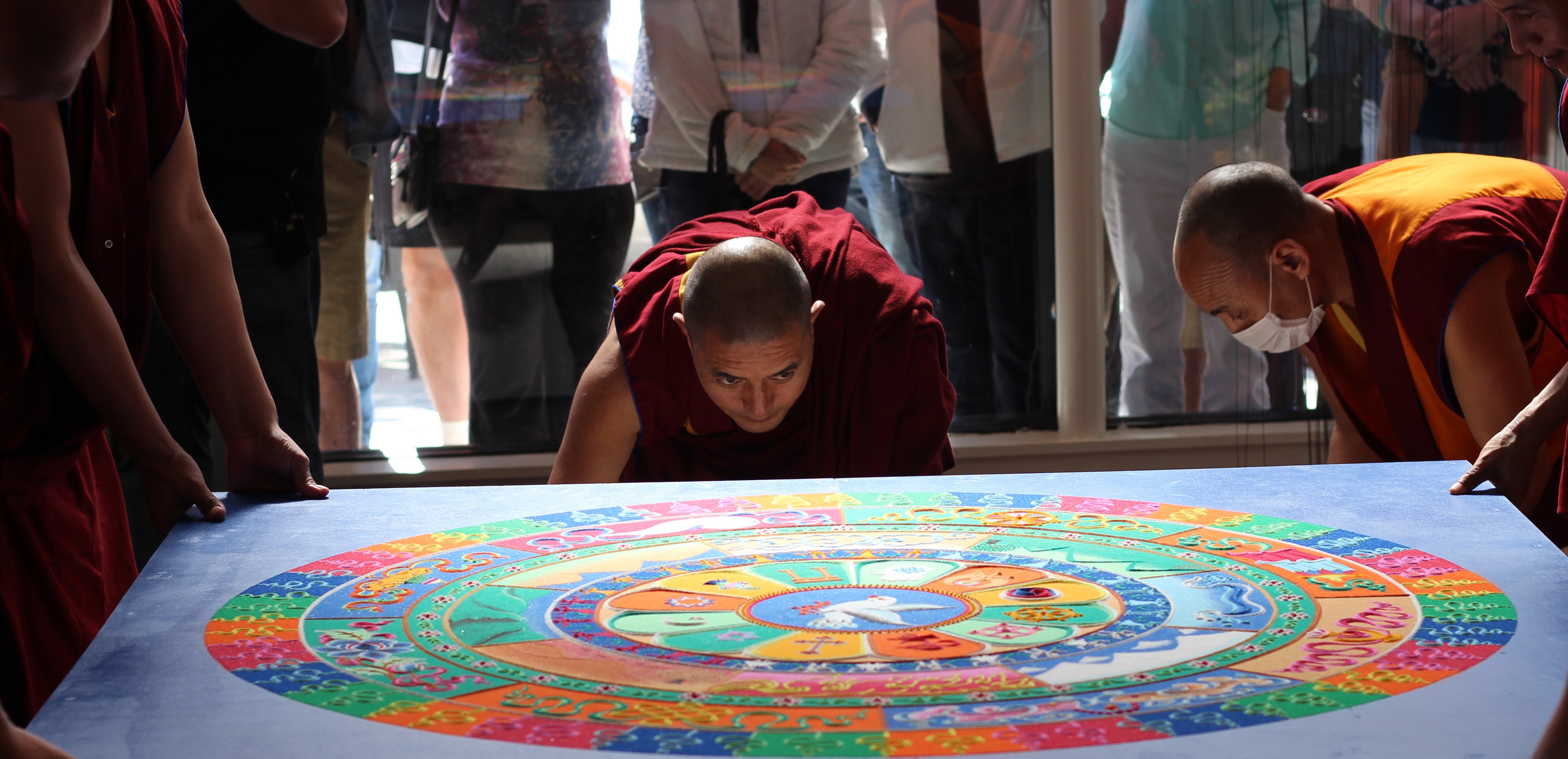Four Buddhist monks sat cross-legged around an intricate sand mandala that they crafted one grain at a time. Light pours into the room through a large window facing Central Avenue, bathing a cobalt blue colored mat in the sunshine. Against the wall, presiding over the creation is a picture of the 14th Dalai Lama.
Depicted in the middle of the delicate art installation, a dove flies atop the globe — a symbol of world peace.
Florida CraftArt hosted the monks, from the Drepung Gomang Monastery in India, who are traveling the world as part of the 2017 Sacred Arts Tour. From Jan. 31 to Feb. 5, the monks led daily chants, taught artistic workshops and directed cultural events.
Amanda Lewis, a junior in the graphic design program at USF St. Petersburg, witnessed the monk’s prayer. She said the experience was incredible.
“My friend and I were praying with them,” Lewis said. “I closed my eyes and cleared my mind. I felt so calm and happy at the same time. I decided to visit them because my friend loves Buddhism, so she invited me before my class started.”
She said that the mandala, a geometric shape that represents the universe, was beautiful.

One of the eight monks that visited sold hand-made jewelry, clothing and tapestries with Buddhist passages written on them. These items were created by Tibetan refugees in India. All purchases went to funding the monastery.
The head monk, Geshe Lobsang Yowten, led the chants and ceremonies each day. The title geshe is equivalent to a Ph.D. in the western education system. Yowten earned this title at the Gomang Monastery, which doubles as a prominent Buddhist university.
“The most precious thing, like a priceless jewel, is the altruistic mind, having a good heart and having love and compassion for others,” Yowten told The Crow’s Nest through a translator, Virginia Blum.
Yowten had advice for students stressed and worried over school, exams or the world in general.
“The most important thing is not to be overtaken by the anxiety and the fear,” Yowten said. “The only thing that anyone has control over is one’s own mind. Clear away the lack of clarity, the anxiety, worry or whatever difficulty one suffers. In the case of students — you are the future. It is in your own hands, so having confidence in your own role and power to create the future is of most importance.”
Yowten explained that their sect of Buddhist monks follows the Gelung, or “Yellow hat,” a form Buddhism from Tibet. The 14th Dalai Lama, their religious leader, was forced to flee Tibet after it became incorporated by the People’s Republic of China in 1959. The Dalai Lama fled to India where he leads a government in exile and where the monastery the monks come from is located.

The Dalai Lama knows pain and strife and he cannot return home. Yet his ability to forgive and spread hope in the world is renowned. Yowten explained the mindset of forgiveness from the Buddhist perspective.
“We’re always thinking that our enemies are outside, but that is a distraction,” Yowten said. “Because the true enemy is within, the afflictive in one’s own mind-stream.
“The best thing one can do is look within.”
The sand mandala, titled “The World Peace,” incorporates symbols from different religions to represent unity. Utilizing brightly colored sand, the monks work with a chakpur, a cone-shaped tool that pours tiny paths of sand which are meditatively placed in repetitive patterns.

Artful Meditation: One of the monks concentrates on his part of the sand mandala. The monks worked for nearly eight hours for four days straight. This monk is using a chakpur to lay down fine lines of colorful sand.
“My life has always been fairly active, but with Buddhism, it teaches me to be calmer,” Deits said. “Even though I’m doing a million things at once, it really shows me what really matters and stills me inside. It gives me the faith that things will work out.”
Sunday, the monks performed the dissolution ceremony where they wipe the sand away, destroying the mandala. The dissolution represents the non-attachment to the material world and the transient nature of life. The monks then took the sand from Florida CraftArt to the Tampa Bay where they dumped it into the open body of water, signifying the return of life back into the world.



